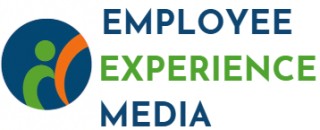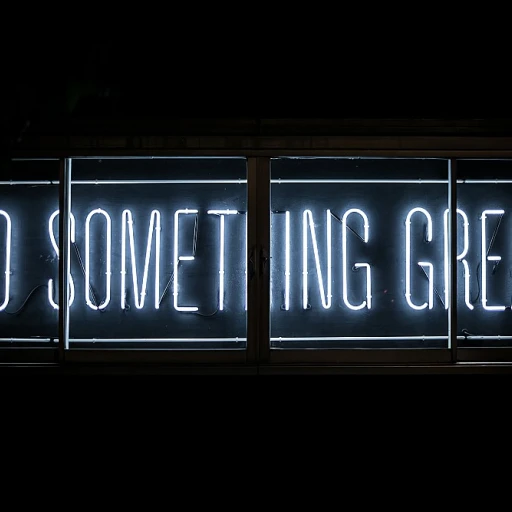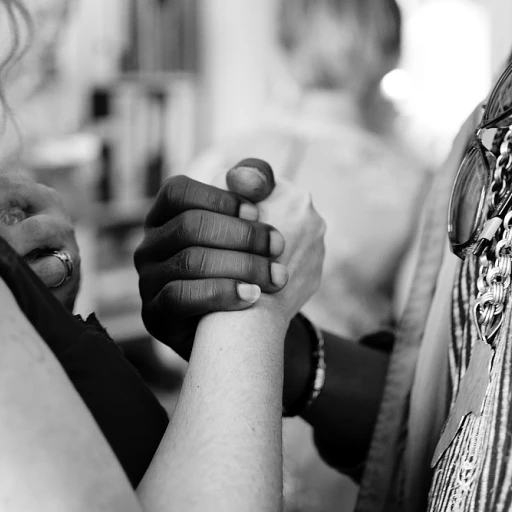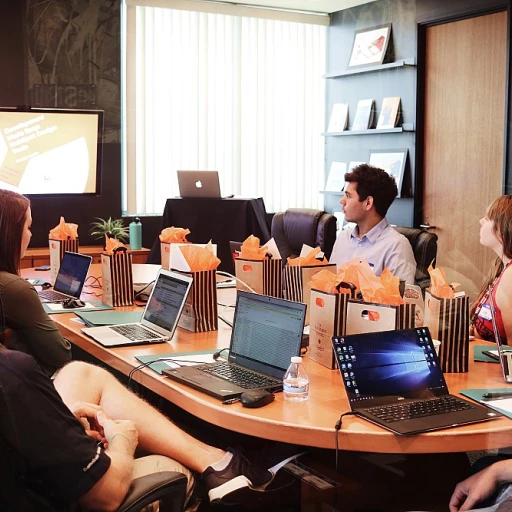
Understanding Organizational Culture Inventory
An Introduction to the OCI
The Organizational Culture Inventory (OCI) is a powerful tool designed to assess and map the existing culture within an organization. It allows organizations to better understand the behavioral norms that influence the performance and effectiveness of teams, departments, and the organization as a whole. This inventory is vital in evaluating the current cultural dynamics and identifying areas for potential cultural change.
Developed through extensive research into organizational behavior, the OCI measures ideal versus current culture by categorizing behavioral norms into a circumplex model. This model illustrates the organizational culture under twelve distinct styles that encapsulate a range of human and organizational values, from competitive to cooperative dynamics. Through this lens, organizations can gain insights into their cultural attributes that are potentially impacting team performance and overall organizational effectiveness.
The OCI uses targeted surveys to obtain data from members of the organization, thus providing a comprehensive assessment of the prevailing cultural climate. This survey builds a foundation for change by not only showcasing the existing norms but also aiding leaders in aligning them with the desired or "ideal" culture. The assessment leverages human-centric analysis to inform leadership about the congruency or disparity between the organizational values and the lived experiences within teams.
With these insights, organizations embark on a cultural change process that is methodical and informed, paving the way for improved management practices and long-term corporate culture enhancement. By equipping organizations with a clear view of their current and preferred culture, the OCI promotes strategic action aligned with both organizational objectives and the well-being of its workforce.
Key Components of Organizational Culture Inventory
Core Elements Constituting the OCI Framework
The Organizational Culture Inventory (OCI) serves as a vital tool for organizations striving for a comprehensive understanding and improvement in their cultural landscape. By addressing various facets, it helps map out the current culture effectively, setting a stage for cultural change and enhanced organizational performance.
The Behavioral Norms are one of the core components of the OCI framework. This aspect delves into the specific behaviors and expectations that currently define how members function within an organization. These norms also provide insights into how leadership and team dynamics can be reshaped to reach an ideal culture.
OCI leverages the Circumplex Model, which identifies twelve behavioral styles categorized under passive/defensive, aggressive/defensive, and constructive cultural norms. These styles are vital for analyzing both the current and preferred cultural conditions, guiding strategic decisions and fostering a lasting cultural change.
The framework also incorporates a Cultural Assessment survey, which gathers rich insights from organization members. This survey aids in assessing cultural strengths and areas needing transformation, further informing the management strategies towards an ideal culture.
The OCI places significant emphasis on Organizational Effectiveness and how culture impacts it over the long term. By evaluating the interaction between existing organizational norms and desired change, the inventory enables organizations to align their cultural strategy for maximized human and organizational potential, thereby supporting a sustained change process.
For those interested in garnering in-depth understanding of these dynamics, the notion of cultural insights is vital to strengthening organizational capabilities.
The Role of Organizational Culture Inventory in Employee Experience
Enhancing Employee Experience Through Cultural Insight
Organizational Culture Inventory (OCI) plays a pivotal role in shaping the employee experience by offering a structured approach to understanding and improving the cultural dynamics within a company. By assessing the current culture and identifying the ideal culture, organizations can pinpoint areas that need cultural change, ultimately enhancing employee satisfaction and productivity.
The OCI survey provides insights into the behavioral norms that prevail within an organization. It helps in understanding how these norms impact employees' day-to-day experiences. This cultural assessment is crucial for leadership and management teams aiming to foster a positive work environment. By identifying gaps between the current and preferred culture, organizations can implement targeted strategies to drive cultural change.
Impact on Team Dynamics and Performance
When organizations actively engage in culture change initiatives based on OCI findings, they often see improvements in team dynamics and overall performance. Teams that operate within a supportive and constructive cultural framework are more likely to collaborate effectively, innovate, and achieve their goals. The OCI helps in aligning the organizational culture with the long-term objectives of the company, ensuring that cultural norms support rather than hinder progress.
Moreover, the OCI can be instrumental in addressing competing values within the organization. By providing a clear picture of the existing cultural landscape, it allows leaders to make informed decisions about which cultural elements to nurture and which to transform. This process not only enhances organizational effectiveness but also contributes to a more engaging and fulfilling employee experience.
For organizations keen on monitoring how cultural shifts affect employee engagement, it’s crucial to keep track of changes in employee access after office hours and other related factors. This ongoing assessment ensures that the cultural changes are having the desired impact on the workforce.
Benefits of Implementing Organizational Culture Inventory
Advantages of Adopting the Organizational Culture Inventory
Implementing the Organizational Culture Inventory (OCI) can significantly enhance the dynamics of cultural transformation within a company. This powerful tool helps organizations measure and understand the prevalent culture, ultimately guiding them towards a more desired state. Here are some benefits organizations can expect:- Enhanced Performance: Utilizing the OCI allows organizations to identify areas for improvement, aiding in enhancing overall performance. By assessing current cultural norms, management can make informed decisions that align with the organization’s goals and strategies.
- Informed Strategic Planning: This tool supports strategic planning by providing valuable insights into the existing culture. Understanding the gap between the current culture and the ideal culture helps in aligning long-term strategies with organizational effectiveness.
- Improved Team Dynamics: The survey insights foster better understanding among team members, encouraging a shift towards more constructive behavior. This is especially crucial in aligning individual and organizational values, promoting unity and cooperation.
- Leadership Development: By highlighting strengths and areas for development, the OCI assists leaders in fostering a culture that supports organizational goals. Leaders can leverage cultural assessment data to drive behavioral norms that support positive change.
- Increased Employee Engagement: When organizations actively work towards a preferred culture, it enhances employee satisfaction and engagement. This proactive approach in cultural change contributes to a positive ambiance, making employees feel valued and motivated.
Challenges in Organizational Culture Inventory Implementation
Navigating Implementation Obstacles
While the Organizational Culture Inventory (OCI) is instrumental in assessing and enhancing organizational culture, its implementation is not devoid of hurdles. Recognizing these challenges is crucial for organizations aiming for successful integration. Cultural change can be daunting, and understanding the inherent complexities is vital for effective adaptation.
Organizations often face resistance to change, primarily due to deeply ingrained norms and practices. Members may be accustomed to the current culture, which can make the shift towards an ideal culture a challenging journey. This resistance might stem from a fear of the unknown or discomfort with altering familiar behavioral norms. Leadership plays a critical role here, as effective management can ease the transition by clearly communicating the benefits of the change process.
Another significant challenge is the comprehensive cultural assessment required. The OCI provides valuable insights, but without a thorough survey of the organizational environment, the assessment may not capture the complete picture. It's essential to conduct a detailed inventory of the current culture to identify areas that need improvement. Understanding the circumplex model is integral to ensuring that cultural change aligns with organizational goals and fosters long-term improvement in organizational effectiveness.
Ensuring alignment between the ideal culture and the organization's strategic objectives is another complexity. Sometimes, there might be a disconnect between what an organization believes its preferred culture should be and the actual performance outcomes expected. The use of a team-oriented approach can help bridge this gap, fostering collaboration and collective growth among members to achieve desired cultural norms.
Lastly, the competing values framework within a corporate culture poses a challenge. Striking a balance between different values and priorities is crucial for a harmonious organizational environment. Human synergistics propose that this balance can be achieved through continuous assessment and management support, emphasizing the importance of leadership in steering cultural change.
Best Practices for Effective Organizational Culture Inventory
Enhancing the Organizational Culture Inventory Process
Implementing an effective Organizational Culture Inventory (OCI) process necessitates a focused and strategic approach. To ensure success, organizations can follow a set of best practices that enhance the insights gained from the culture assessment and support meaningful cultural change.
- Involve Key Stakeholders: Engage leadership and team members early in the OCI process to foster a shared understanding of the current culture and align on cultural objectives. This collaborative approach helps obtain buy-in and encourages participation, making the cultural assessment more reflective of the organization as a whole.
- Utilize a Reliable Assessment Tool: Employing a credible and validated tool like the OCI ensures accurate measurement of behavioral norms within the organization. Tools from sources like Human Synergistics can provide a comprehensive view of the organization's cultural dynamics through frameworks such as the circumplex model.
- Focus on Both Current and Ideal Culture: Assess not only the current cultural state but also the preferred culture that aligns with the organization's strategic goals. This dual-focus helps organizations identify areas for cultural change and guides the development of targeted interventions.
- Facilitate Open Dialogue: Create an environment that encourages honest discussions about the results of the cultural assessment. Open dialogue can help demystify the findings and empower employees to contribute to the culture change process.
- Integrate Insights into Strategic Planning: Use the OCI insights to inform broader organizational strategies, ensuring that culture change is aligned with long-term objectives. This integration can drive organizational effectiveness and enhance overall performance.
- Monitor and Adapt: The culture inventory is not a one-time event; it should be part of an ongoing cycle of assessment and improvement. Continuously monitor the culture change process and make necessary adjustments to keep the momentum going.
By following these best practices, organizations can maximize the positive impact of their Organizational Culture Inventory efforts, fostering a corporate culture that supports both individual and organizational success.













